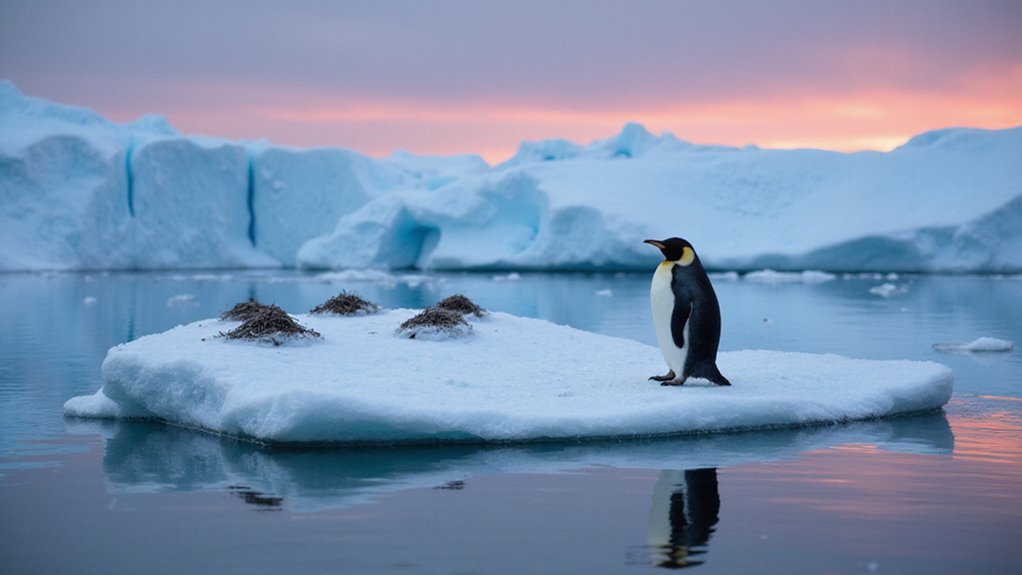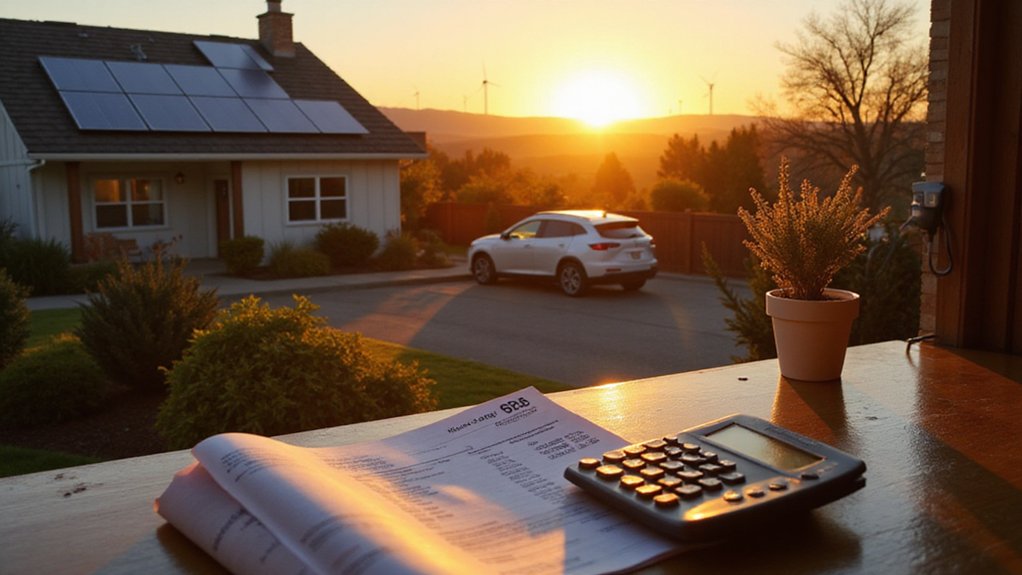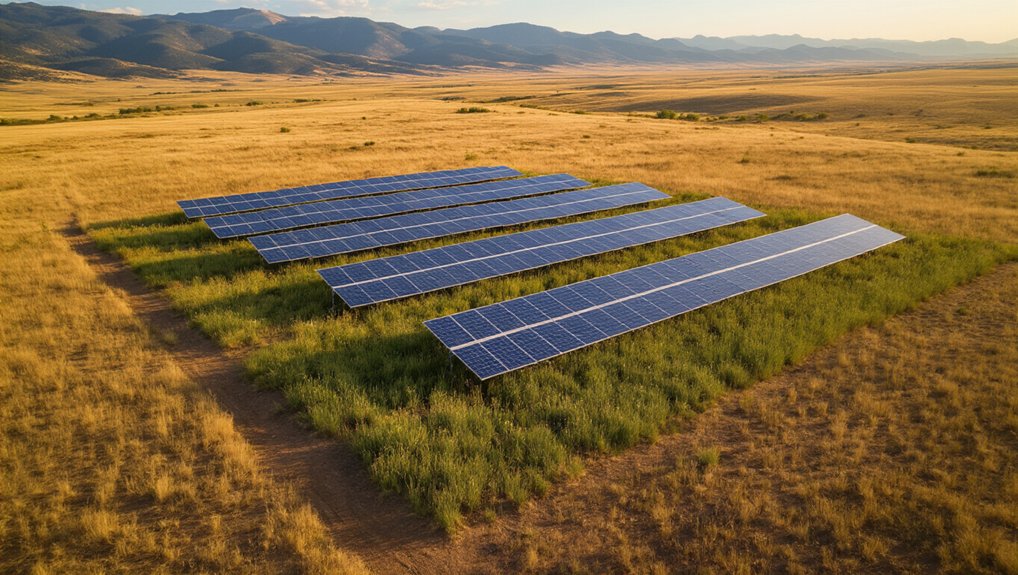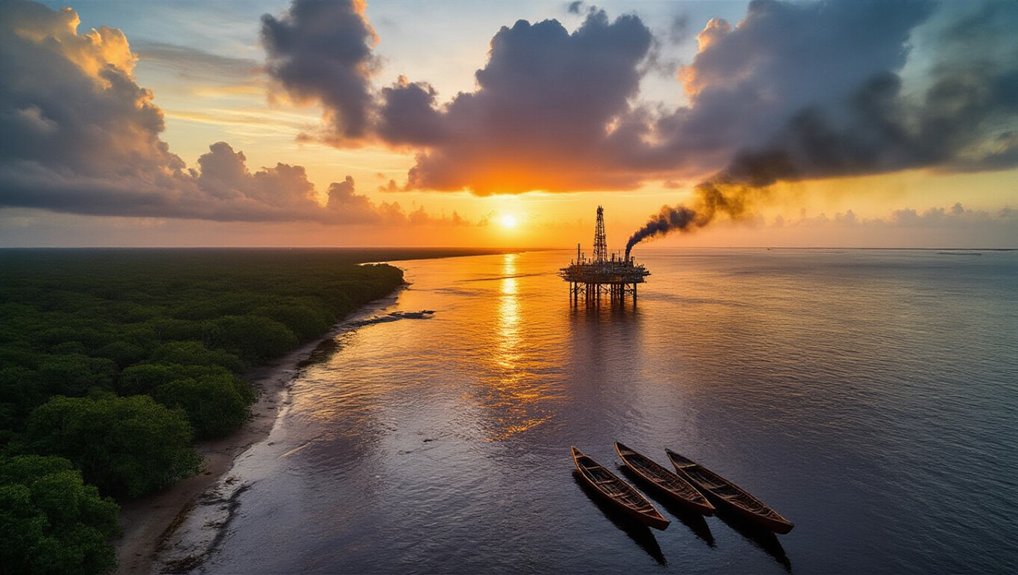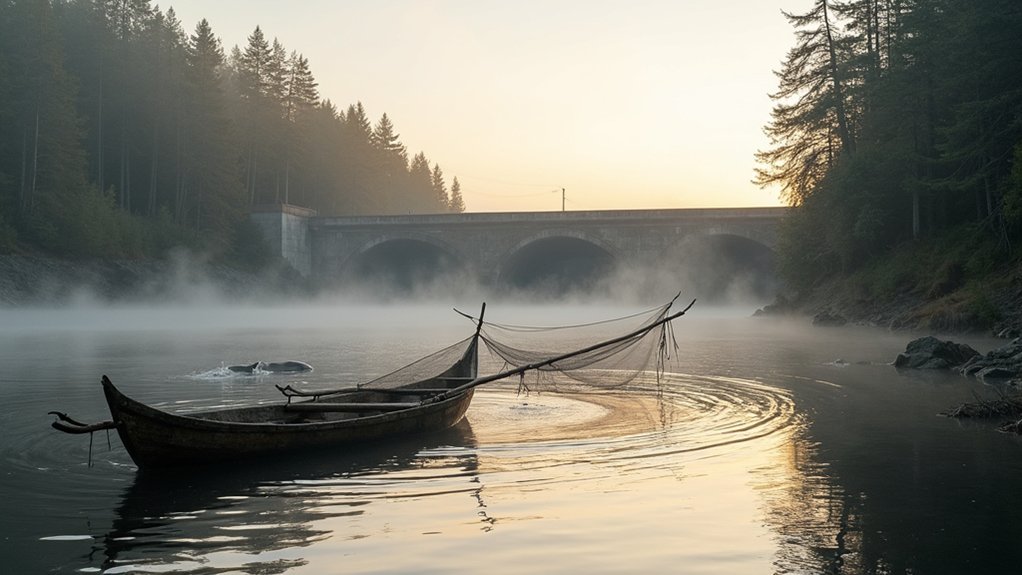Rising temperatures in Antarctica are decimating penguin colonies. Sea ice loss has been devastating – in 2022, the Bellingshausen Sea lost 100% of its ice, causing 80% of emperor penguin chicks to fail fledging. Scientists predict 90% population decline by 2100 if we hit 2°C warming. No ice means no krill, which means hungry, homeless penguins. Half of all penguin species are now threatened. The penguins’ tragedy is just the tip of the melting iceberg.
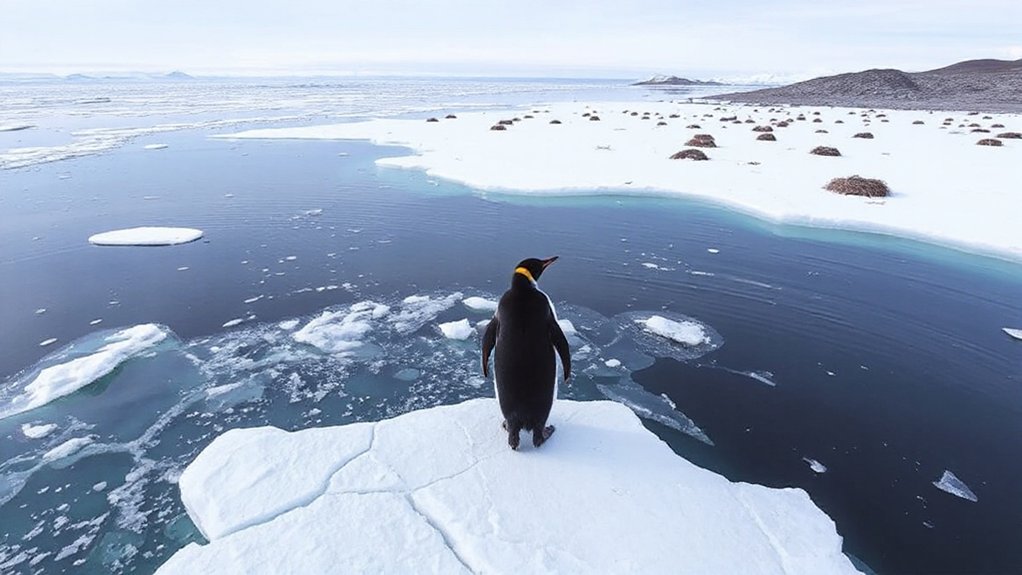
As Antarctica’s ice shelves continue to melt at an alarming rate, penguin colonies across the region face an existential threat unlike anything they’ve encountered in their evolutionary history. The numbers are brutal. In 2022, the Bellingshausen Sea experienced 100% sea ice loss. Think about that. Complete obliteration. The result? Chicks in four out of five emperor penguin colonies didn’t make it. They never even got the chance to fledge.
It’s not just about cute waddling birds. It’s about survival. Sea ice isn’t a luxury for these animals—it’s their everything. They need it for nesting, foraging, and raising their young while they develop waterproof feathers. Since 2016, sea ice levels have hit record lows, with 2022 marking a new horrifying benchmark. Scientists predict that without curbing global warming, emperor penguins could lose 90% of their population by 2100. Yeah, that’s only 76 years away.
The magic number is 2°C. Cross that threshold in global temperature increase, and we kiss goodbye to up to three-quarters of major Antarctic penguin colonies. Half of emperor colonies and a staggering 75% of Adélie colonies are hanging by a thread. The kicker? We’re on track to blow past 2°C within 40 years.
The 2°C threshold isn’t negotiable—it’s the difference between penguins surviving or becoming Antarctica’s ghosts.
It gets worse. No sea ice means no krill. No krill means hungry penguins. Hungry penguins means failed breeding seasons. It’s that simple. The Western Antarctic Peninsula has experienced rapid warming of over 2.5°C in just 50 years.
Some penguins are getting swept away by warmer ocean currents, stranding them far from suitable habitat. Recently, nearly 1,000 penguins were found stranded in Brazil, highlighting the severe displacement of these birds due to changing ocean patterns. Imagine being dropped in the middle of a desert when you need snow to survive. That’s their reality.
Currently, half of the world’s 18 penguin species are classified as Threatened on the IUCN Red List. Emperor and Adélie penguins, specially adapted to Antarctic conditions, can’t just “evolve” overnight to handle this rapid change. Transitioning to geothermal energy could significantly reduce greenhouse gas emissions that drive these devastating temperature increases in Antarctica.
Conservation groups are scrambling, but without serious climate action, these iconic birds might become just another sad chapter in Earth’s extinction story.
